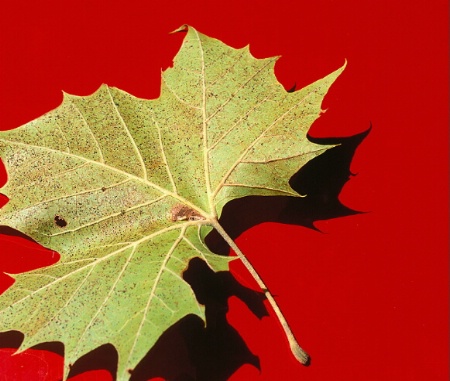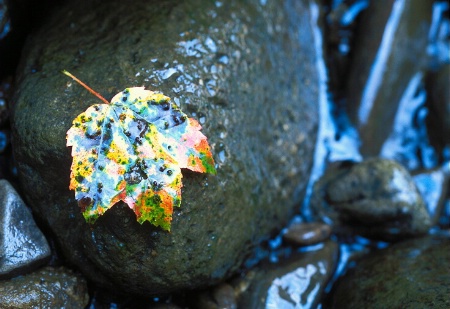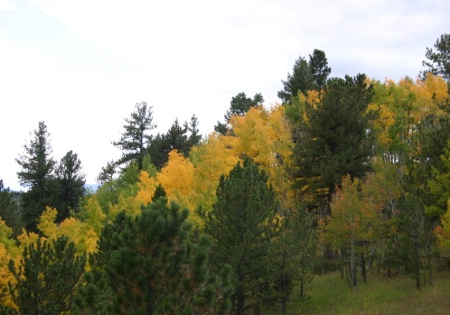
Lorraine Jones |
|
Dark Photos on a Sunny Afternoon
Yesterday I went to the mountains to take some fall shots of all the wonderful trees turning color up there. I took about 90 photos, but was very disappointed that MOST of them turn out dark/shadowy. I tried the different modes in my Digital Rebel (especifically, Program, Shutter Priority, Auto DOF, and Landscape) and tried some with flash and without flash (most of the time I had to force the flash as it was pretty sunny out). I tried faster shutter speeds and adjusted white balance. I even set my camera to do auto exposure bracket, then white balance bracket. I ended up adjusting my photos' colors/balance in PS.What did I do wrong, or should have done when taking those photos? I really would like to use my camera to its potential, but I was getting better/crisper shots with my Sony Mavica CD350. I know I have a lot to learn and I am trying. I would appreciate any insights or advice anyone could provide. If you'd like me to upload a sample photo, let me know. Thank you very much.
September 21, 2004
|
|
|
Bob Cammarata |
|
|
|
|
|

Color and Shadow
Shot in bright sunlight, on the hood of my car. (Nikkor 35 mm, Provia 100)
Bob Cammarata
|
|
|
|

Sunspots
Shot in shade...on a bright sunny day.
(Nikkor 50 mm, Provia 100)
Bob Cammarata
|
|
|
|
On those bright sunny days, dark shadowy areas are a way of life.
The best time to shoot fall scenics is when clouds or haze obscures the direct rays of the sun.
In your case though, you might want to try metering manually off the leaves themselves. (Get up close to them if you have to, but try to fill the frame with a neutral color.)
This will give you a good aperture/shutter speed combination to properly expose the leaves. You can then back up and compose your shot. You will still get shadows, but your foliage will be properly exposed.You can also use the harsh light to your advantage, by using the deep shadows as part of the composition.
(See example: "Color and Shadow"). Along the same lines, you can also shoot individual leaves in deep shade, which will give a cool, saturated look.
(See example: "Sunspots") The advantage of digital is that you can see the results and make exposure adjustments at the scene. Good luck.
September 20, 2004
|
|
|
Lorraine Jones |
|
|
|
|
|

Sample 1
These trees are by a mountainside. Maybe that's why it's dark?
Lorraine Jones
|
|
|
|

Sample 2
In this shot I adjusted the exposure, so I got a brighter shot, but the sky is just white. I have a shot of the same image before I adjusted the exposure and the sky was exposed correctly (blue with some clouds) but the trees were too dark.
Lorraine Jones
|
|
|
|
Thanks, Bob. I will try metering off the leaves but I have a question about metering--this is one things I could never quite get. How do you meter? I know it's probably a very basic question, so thank you in advance for being patient with me. I can see how harsh light can be to one's advantage, but I think it's different when shooting cluster of trees.I have uploaded two samples of my photos--if you don't mind taking a look at them and let me know what your thoughts are--that would be most appreciated.
September 20, 2004
|
|
|
Bob Cammarata |
|
Ena,
I haven't seen your samples yet, but manual-metering requires that you select a shutter speed first (or aperture setting),... then get in close to a neutral-colored object which falls within the same light as your overall scene. The center of your viewfinder should cover the object.
If you camera's exposure is set to "manual mode", you should get a recommended, corresponding aperture (or shutter speed) setting to match what you have chosen.
Your camera's Owner's Manual should be able to describe this in more detail.
September 20, 2004
|
|
|
Lorraine Jones |
|
Now I get it. Thanks, Bob. I'll refer to my manual.
-Ena-
September 20, 2004
|
|
|
Bob Cammarata |
|
Ok,...Your two samples just came in! I don't know what happened on the first shot to make it so dark, but on the second one, it looks like the bright sky might have "confused" your in-camera meter and caused the foreground to under-expose. Unfortunately, there is little you can do about this when shooting in bright daylight.
What would help to balance the reflected light values in your second photo, is to shoot with the sun behind you, and at a lower angle. From that direction, the photo of the sky and trees should look pretty close to normal. There are also split field neutral-density filters available which you can attach to the end of your lens to darken the sky enough to bring out more detail in the trees and leaves.
September 20, 2004
|
|
|
Lorraine Jones |
|
Thanks much, Bob. I think I'll try your lower-angle shooting idea (that would eliminate the sky), and I will look into the neutral-density filter. We are going up to the mountains again on 10/1 and hopefully Mother Nature will leave me enough fall foliage to practice on :-) Thanks again.
September 20, 2004
|
|
|
|
Log in to respond or ask your own question.
|